Pythagoras' theorem
Categories: gcse trigonometry pythagoras

This chapter covers Pythagoras' theorem, its proof and its applications.
Here is a video covering this:
Pythagoras' theorem
Pythagoras' theorem applies to right-angled triangles.
If we know any two sides of a right-angled triangle, Pythagoras' theorem allows us to calculate the third side.
This right-angled triangle has three sides, of length a, b and c:
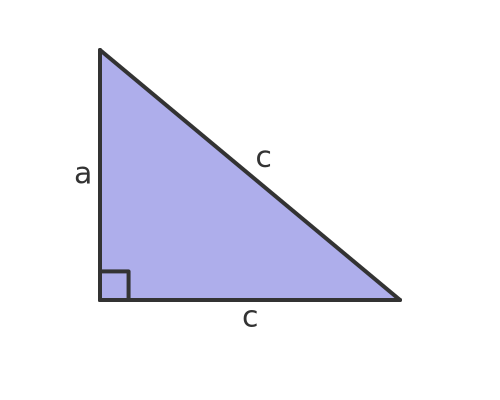
This side opposite the right angle, side c, is called the hypotenuse. It is always the longest side.
The theorem tells us:
The square of the hypotenuse is equal to the sum of the squares of the two opposite sides.
This can be expressed as a formula:
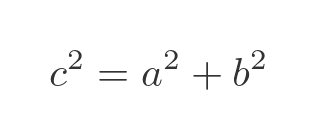
Where c is the hypotenuse, a and b are the other two sides. This diagram shows the triangle with a square drawn on each side. The area of the square drawn on side c is equal to the sum of the areas of the other two squares:
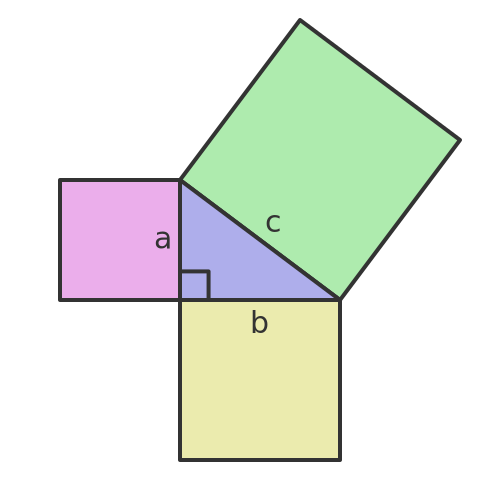
Alternative formulas
If we know a and b we can find c, using the previous formula:

We can take the square root of both sides:
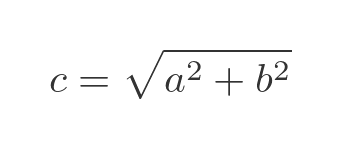
If we know b and c we can find a, rearranging the original formula:
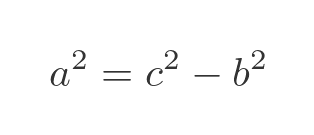
We can take the square root of both sides:
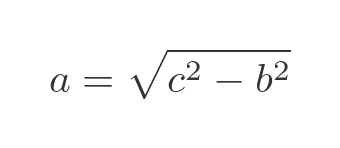
This similar equation allows us to find b if we know a and c:
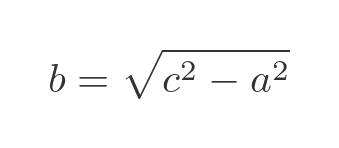
Example 1
Here is a triangle where we know that side a = 3 and b = 4:
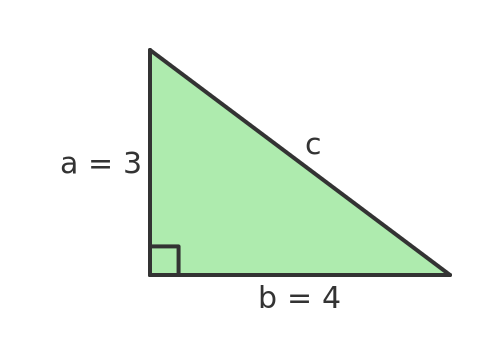
If we use the formula above we can find c:

Substituting for a and b:

This gives:
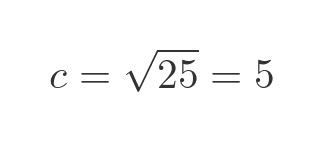
In this case, c2 is 25, which is a perfect square, so the side c has a nice integer value of 5.
To see how this works, we can divide each of the squares into a grid of smaller squares, each of size 1 by 1.:
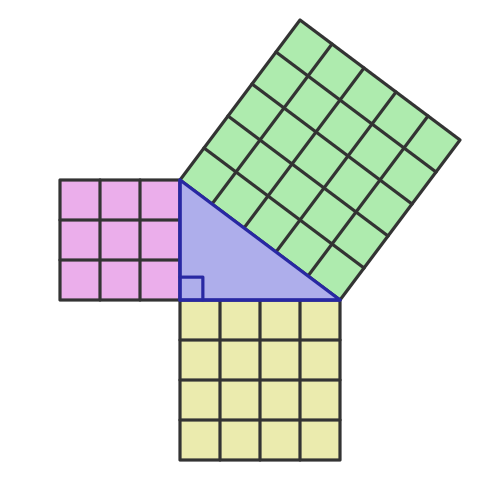
The left-hand (magenta) square has side length 3, so it is made of 3 by 3 small squares. The lower (yellow) square has side length 4, so it is made up of 4 by 4 small squares. The green square, on the hypotenuse, has side length 5, so it is made up of 5 by 5 small squares.
Here is how the two small squares add up to the same area as the large square. If we take the 9 magenta squares and add them around the edge of the 16 yellow squares square, we get a 5 by 5 square:
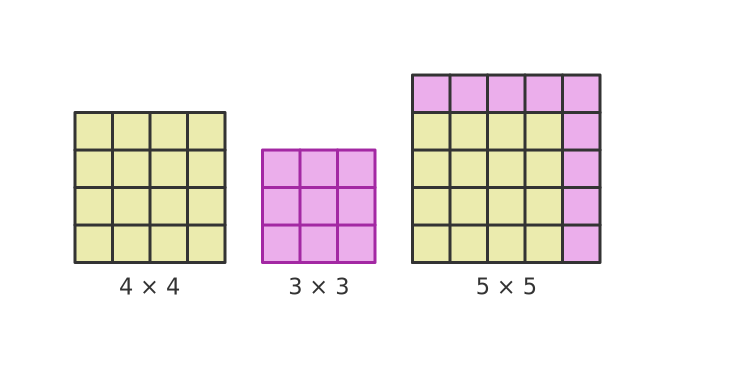
A right-angled triangle where all three sides have integer lengths is a special case. This particular case is called a 3, 4, 5 triangle. We call the numbers (3, 4, 5) a Pythagorean triple.
There are other cases, for example, a right-angled triangle with sides 5 and 12 has a hypotenuse of length 13. So (5, 12, 13) is also a Pythagorean triple.
Most right-angled triangles do not have all sides of integer length. Even if two of the sides have integer lengths, the third will usually have a length that involves a square root term.
Example 2
This time we will find side a when we know sides b and c.
Here is a triangle with b = 2 and c = 3:
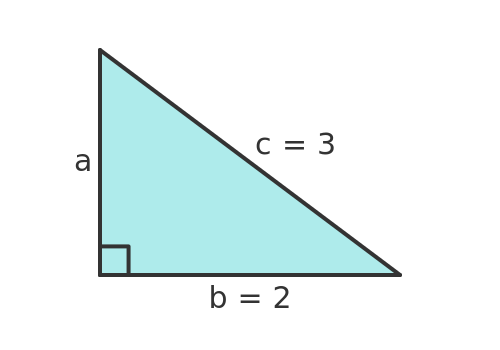
If we use the formula above we can find c:

Substituting for b and c:

This gives:
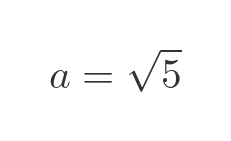
In this case, a2 is 5. Since 5 is not a square number, we can't find an exact value of a. It is approximately 2.2361, but its exact value can only be expressed as a surd.
Example 3
This time we will look at a triangle where the two sides a and b are both equal to 1:
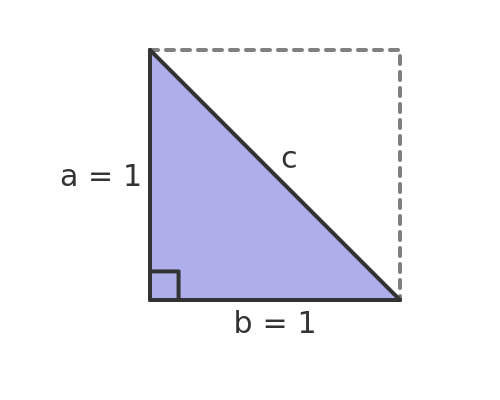
The interesting thing about this triangle is that it is half of a square. The dashed grey line shows how we can add a second, identical triangle to make a square. The square has an area of 1 because its side is length 1.
We can find the length of the side c by setting a and b to 1 in the original equation:

This gives:
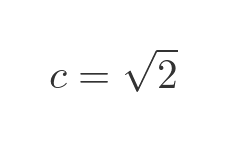
So this time the hypotenuse isn't an integer value, it is the square root of 2.
We can see why this might be the case in this diagram:
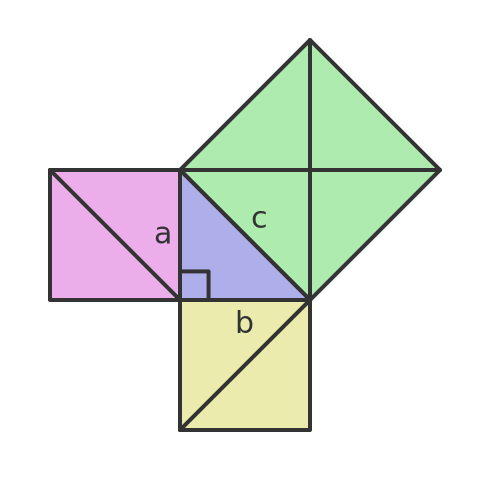
The two small squares are each made up of two triangles that are congruent with the original triangle. This means that they are identical in size and shape.
The big square is made up of four triangles that are also congruent with the original triangle.
Even without using Pythagoras' theorem, we can see that the area of the big square is equal to the sum of the areas of the two small squares.
Since each small square has an area of 1, the big square has an area of 2. And since the area is equal to the square of the side length, this tells us that the big square has a side length of root 2.
Applications of Pythagoras' theorem
We can use Pythagoras' theorem to solve a right-angled triangle. If we know any two sides we can find the third side.
This can be useful in geometry problems, but it also has other applications. For example:
- We can find the length of the diagonal of a rectangle. This can tell us what the longest item we can fit in a box of a particular size, for example.
- We can find the shortest distance between two points on a graph.
- We can find the length of a ladder we would need to reach a window.
See also

Join the GraphicMaths Newletter
Sign up using this form to receive an email when new content is added:
Popular tags
adder adjacency matrix alu and gate angle area argand diagram binary maths cartesian equation chain rule chord circle cofactor combinations complex modulus complex polygon complex power complex root cosh cosine cosine rule cpu cube decagon demorgans law derivative determinant diagonal directrix dodecagon eigenvalue eigenvector ellipse equilateral triangle euler eulers formula exponent exponential exterior angle first principles flip-flop focus gabriels horn gradient graph hendecagon heptagon hexagon horizontal hyperbola hyperbolic function hyperbolic functions infinity integration by parts integration by substitution interior angle inverse hyperbolic function inverse matrix irrational irregular polygon isosceles trapezium isosceles triangle kite koch curve l system line integral locus maclaurin series major axis matrix matrix algebra mean minor axis nand gate newton raphson method nonagon nor gate normal normal distribution not gate octagon or gate parabola parallelogram parametric equation pentagon perimeter permutations polar coordinates polynomial power probability probability distribution product rule proof pythagoras proof quadrilateral radians radius rectangle regular polygon rhombus root sech set set-reset flip-flop sine sine rule sinh sloping lines solving equations solving triangles square standard curves standard deviation star polygon statistics straight line graphs surface of revolution symmetry tangent tanh transformation transformations trapezium triangle turtle graphics variance vertical volume of revolution xnor gate xor gate